 W
WMargaret Ball (1515–1584) was a prominent member of 16th-century Irish society, who, despite being the widow of a Lord Mayor of Dublin, was arrested for her adherence to the Catholic faith and died of deprivation in the dungeons of Dublin Castle. She was declared a martyr for the faith by the Catholic Church and beatified in 1992, one of a group of 17 Irish Catholic Martyrs.
 W
WJames Butler of Duiske was a younger son of James Butler, 9th Earl of Ormond and Lady Joan Fitzgerald. In 1576, Queen Elizabeth I of England awarded him the lands of Duiske Abbey which had been confiscated by the Crown.
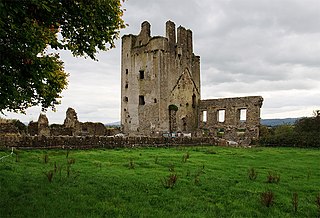 W
WJohn Butler of Kilcash was the third son of James Butler, 9th Earl of Ormond and Lady Joan Fitzgerald.
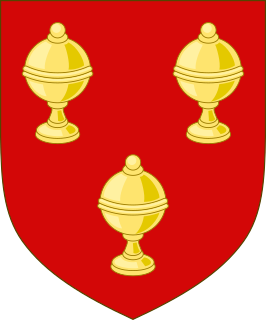 W
WLady Margaret Butler, Lady Boleyn was an Irish noblewoman, the daughter and co-heiress of Thomas Butler, 7th Earl of Ormond. She married Sir William Boleyn and through her eldest son Sir Thomas Boleyn, was the paternal grandmother of Anne Boleyn, second wife of King Henry VIII of England, and great-grandmother of Anne and Henry's daughter, Elizabeth I of England.
 W
WJames de Barry, 17th Baron Barry and 4th Viscount Buttevant, was the son of Richard de Barry, of Rathbarry in Barry Roe, and Isabel FitzGerald, a daughter of Sir James FitzGerald of Leixlip, who was a son of Gerald FitzGerald, 8th Earl of Kildare. His father Richard was a son of James de Barry, Lord of Ibane, and Elane MacCarthy of Muskerry.
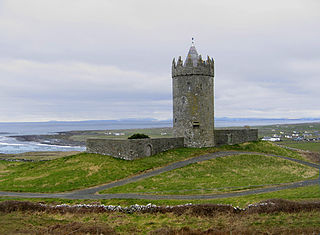 W
WBoetius Clancy or MacClancy was a 16th-century Irish landowner, MP and High Sheriff.
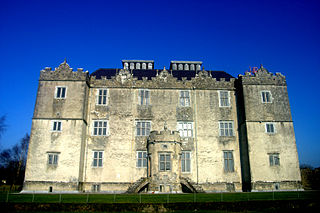 W
WRichard Burke, 4th Earl of Clanricarde was an Irish nobleman and politician. He was the son of Ulick Burke, 3rd Earl of Clanricarde and Honora Burke. Knighted in 1602 for his exploits as leader of the English cavalry during the Battle of Kinsale, he would later serve as Governor of Connaught from 1604 to 1616, and as a member of the Privy Council of Ireland. Having established himself as the largest and most influential landowner in Connacht, his later life was characterized by animosity between him and an increasingly hostile and acquisitive Dublin government.
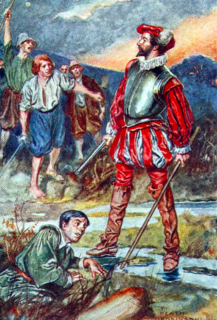 W
WSir Edmund Butler of Cloughgrenan, was an Irish noble and the second son of James Butler, 9th Earl of Ormond and Lady Joan Fitzgerald. He was a scion of the House of Ormond, and a rebel against the Tudors.
 W
WJohn Derricke was the author and artist of The Image of Irelande, with a Discoverie of Woodkarne, a 1581 book describing the Irish campaigns of Lord Deputy Henry Sidney.
 W
WGerald FitzGerald, 15th Earl of Desmond, also counted as the 14th, and called the Rebel Earl, was the leader of the Desmond Rebellion of 1579. He was attainted in 1582 and went into hiding but was hunted down and killed in 1583.
 W
WJames FitzGerald, 10th Earl of Desmond was the son of Maurice FitzGerald, 9th Earl of Desmond. He plotted against King Henry VIII with King Francis I of France in 1523 and with Emperor Charles V in 1528 or 1529.
 W
WJames FitzGerald, de jure 12th Earl of Desmond was the grandson of Thomas FitzGerald, 11th Earl of Desmond. James's father, Maurice, had died of the plague shortly after Thomas attained the earldom, so upon Thomas's death, James inherited it. However, James's title was disputed by his granduncle John FitzGerald, de facto 12th Earl of Desmond. John died in 1536. Although James lived until 1540, he was succeeded by John's son James FitzGerald, 14th Earl of Desmond.
 W
WJames (Séamus) FitzJohn FitzGerald was an Irish nobleman, the second son of John FitzGerald, de facto 12th Earl of Desmond, and Móre O'Brien, daughter of Donogh O'Brien of Carrigogunnell, Lord of Pobble. He held the title of Earl of Desmond from 1536 until his death in 1558.
 W
WJohn FitzGerald, de facto 12th Earl of Desmond was the brother of Thomas FitzGerald, 11th Earl of Desmond. Upon his brother's death in 1534, John disputed the title to the earldom of his brother's grandson, James FitzGerald, de jure 12th Earl of Desmond.
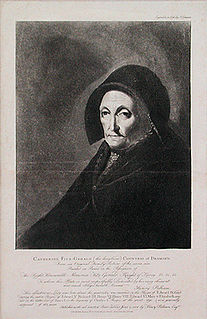 W
WKatherine FitzGerald, Countess of Desmond was a noblewoman of the Anglo-Norman FitzGerald dynasty in Ireland. English writers of the Tudor period, including Sir Walter Raleigh, helped popularise "the old Countess of Desmond" as a nickname for her, due to her longevity. One estimate placed her age at death in excess of 120 years. Another ranged as high as 140. Most likely she lived to about 100. A recent biography of the countess suggested that Katherine was at least 90 when she died.
 W
WMaurice FitzGerald, 9th Earl of Desmond was the brother of James FitzGerald, 8th Earl of Desmond.
 W
WThomas FitzGerald, 11th Earl of Desmond was the uncle of James FitzGerald, 10th Earl of Desmond.
 W
WTheobald Dillon, 1st Viscount Dillon, was an Irish military commander and adventurer. He held extensive lands in eastern Connacht and north-western Leinster, some acquired by sharp practices. He was a loyal supporter of Elizabeth I of England in her Irish wars.
 W
WDonal of the Skins or Hides, also called Peltry O'Donovan or simply Donal I O'Donovan, was The O'Donovan Mor, Lord of Clancahill from his inauguration with the White Wand circa 1560 by the MacCarthy Reagh, Prince of Carbery, to his death in 1584. Although not recorded his inaugurator was probably Cormac na Haoine MacCarthy Reagh, 10th Prince of Carbery.
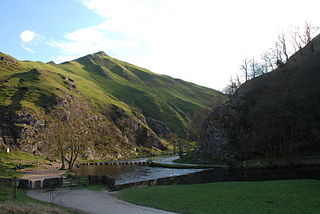 W
WJames Dowdall was a Roman Catholic merchant of Drogheda, Ireland. The Dowdalls of Louth originated at Dovedale in Derbyshire and became prominent in Ireland in the late Middle Ages.James Dowdall, the Lord Chief Justice of Ireland, who died in 1584, was a cousin of Dowdall.
 W
WSir Barnaby Fitzpatrick, 2nd Baron Upper Ossory, was educated at the court of Henry VIII of England with Edward, Prince of Wales. While he was in France he corresponded regularly with King Edward VI. He was active in suppression of Wyatt's rebellion in 1553. He went home to Ireland, where he had had a lifelong feud with the Earl of Ormonde. His wife and daughter were abducted in 1573 by the Grace family, supposedly at Ormonde's instigation. He killed the rebel Rory O'More in 1578.
 W
WHugh O'Neill, was an Irish Gaelic lord, Earl of Tyrone and was later created The Ó Néill Mór, Chief of the Name. O'Neill's career was played out against the background of the Tudor conquest of Ireland, and he is best known for leading the resistance during the Nine Years' War, the strongest threat to Tudor authority in Ireland since the revolt of Silken Thomas.
 W
WGerald FitzGerald, 8th Earl of Kildare KG, known variously as "Garret the Great" or "The Great Earl", was Ireland's premier peer. He served as Lord Deputy of Ireland from 1477 to 1494, and from 1496 onwards. His power was so great that he was called "the uncrowned King of Ireland".
 W
WGerard FitzGerald, 9th Earl of Kildare, also known in Irish as Gearóid Óg, was a leading figure in 16th-century Irish History. In 1513 he inherited the title of Earl of Kildare and position of Lord Deputy of Ireland from his father.
 W
WThomas FitzGerald, 10th Earl of Kildare, also known as Silken Thomas, was a leading figure in 16th-century Irish history.
 W
WElizabeth FitzGerald, Countess of Lincoln, also known as The Fair Geraldine, was an Irish noblewoman and a member of the celebrated FitzGerald dynasty. She became the second wife of Sir Anthony Browne Jr. and later the third wife of English admiral Edward Clinton, 1st Earl of Lincoln. She was the inspiration for The Geraldine, a sonnet written by Henry Howard, Earl of Surrey.
 W
WAdam Loftus was Archbishop of Armagh, and later Dublin, and Lord Chancellor of Ireland from 1581. He was also the first Provost of Trinity College Dublin.
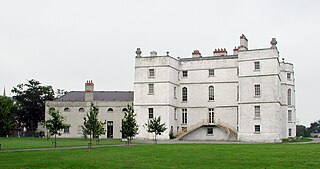 W
WSir Adam Loftus was an Irish politician and public official of the seventeenth century.
 W
WCormac na Haoine (1490–1567) was the 13th Prince of Carbery from 1531–1567. He belonged to the MacCarthy Reagh dynasty.
 W
WOwen MacCarthy Reagh (1520–1594) was the 16th Prince of Carbery from 1576 to 1593. He belonged to the MacCarthy Reagh dynasty. Owen was commonly referred to as "Sir" Owen MacCarthy (McCartie) in the English court records.
 W
WAodh Mac Cathmhaoil, O.F.M., was an Irish Franciscan theologian and Archbishop of Armagh. He was known by Irish speakers at Louvain by the honorary name Aodh Mac Aingil, and it was under this title that he published the Irish work Scáthán Shacramuinte na hAthridhe.
 W
WEdmund MacGauran was the Roman Catholic Archbishop of Armagh, Ireland from 1587 to 1593 and Bishop of Ardagh from 1581 to 1587.Signature of Edmund MacGauran on a document signed in the Maguire castle at Enniskillen, County Fermanagh on 8 May 1593.
 W
WFeidhlimidh Mág Samhradháin, the Second, d. 20 January 1622, was head of the McGovern dynasty and Baron or Lord of Tullyhaw barony, County Cavan from before 1611 until his death on 20 January 1622.
 W
WTibbot na Long Bourke, anglicised as Theobald Bourke, was an Irish peer and parliamentarian. A prominent member of the MacWilliam Burkes of County Mayo, Tibbot was a Member of the Irish House of Commons and was later created the first Viscount Mayo. His successful life followed, and usefully illustrates, the difficult transition for Irish aristocrats from the traditional Gaelic world during the Tudor conquest of Ireland.
 W
WWalter Butler of Nodstown, was the fourth son of James Butler, 9th Earl of Ormond and Lady Joan Fitzgerald. Nodstown is a townland in the civil parish of Ardmayle in the barony of Middle Third, County Tipperary. Moyaliff is a townland and a civil parish in the barony of Kilnamanagh Upper, County Tipperary.
 W
WWilliam Nugent (1550–1625) was a Hiberno-Norman rebel in the 16th century Kingdom of Ireland, brother of Christopher, fourteenth baron of Delvin, and the younger son of Richard Nugent, thirteenth baron of Delvin, from whom he inherited the manor and castle of Ross in County Meath. His mother was Elizabeth Preston, daughter of Jenico Preston, 3rd Viscount Gormanston, and widow of Thomas Nangle, feudal Baron of Navan.
 W
WHugh Roe O'Donnell, also known as Red Hugh O'Donnell, was a sixteenth-century Irish nobleman. He became ruler of Tyrconnell in 1593 after a succession dispute among the O'Donnell dynasty, and after escaping a five-year imprisonment in Dublin Castle by the English. Along with his father-in-law Hugh O'Neill of Tyrone, he led the Irish alliance in the Nine Years' War against the English government in Ireland. Hugh Roe led an Irish army to victory in the Battle of Curlew Pass. After defeat in the Siege of Kinsale, he travelled to Spain to seek support from Philip III. Unsuccessful, he died in Spain and was succeeded by his younger brother Rory O'Donnell. He is sometimes also known as Aodh Ruadh II or Red Hugh II, especially in his native County Donegal.
 W
WDiarmaid Ó Seachnasaigh, Irish knight and Chief of the Name, died before 1567.
 W
WSir Ruadhri Gilla Dubh Ó Seachnasaigh was Chief of the Name during 1583–1650.
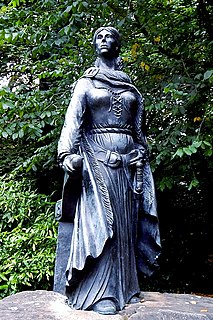 W
WGrace O'Malley - in her native Irish language Gráinne Ní Mháille, also known as Gráinne O'Malley, was the head of the Ó Máille dynasty in the west of Ireland, and the daughter of Eoghan Dubhdara Ó Máille.
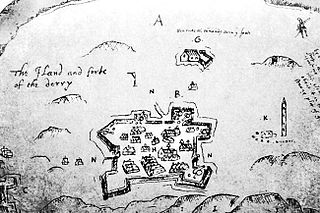 W
WSir Cahir Rua O'Doherty (Irish: Cathaoir Ó Dochartaigh; was the last Gaelic Chief of the Name of Clan O'Doherty and Lord of Inishowen, in what is now County Donegal. O'Doherty was a noted loyalist during Tyrone's Rebellion and became known as the Queen's O'Doherty for his service on the Crown's side during the fighting. After the war O'Doherty had ambitions to become a courtier and applied for a position in the household of Henry Frederick, Prince of Wales, but he increasingly came into dispute with Irish-based officials such as the Viceroy Sir Arthur Chichester and the Governor of Derry Sir George Paulet. In 1608 he launched O'Doherty's Rebellion, seizing Derry from Paulet and burning it to the ground. O'Doherty was subsequently killed in a battle at Kilmacrennan, and the rebellion swiftly collapsed.
 W
WRory O'More, also known as Rory Oge O'More, was the Irish lord of Laois.
 W
WSir Turlough Luineach O'Neill was an Irish Gaelic lord of Tír Eoghain in early modern Ireland. He was inaugurated upon Shane O’Neill’s death, becoming The O'Neill. From 1567 to 1595, Sir Turlough Luineach O'Neill was leader of the O'Neill clan, the most powerful family in Ulster, the northern province in Ireland. He was knighted in 1578.
 W
WJames Butler, 9th Earl of Ormond and 2nd Earl of Ossory, known as The Lame, was the son of Piers Butler, 8th Earl of Ormond and Margaret Fitzgerald, Countess of Ormond. He was created, in 1535, Viscount Thurles, and was confirmed by Act of Parliament, 6 November 1541, in the Earldom of Ormond, as 9th Earl with the pre-eminence of the original earls. His death by poisoning in London has remained an unsolved mystery to this day.
 W
WMargaret Butler, Countess of Ormond, Countess of Ossory was an Irish noblewoman and a member of the powerful and celebrated FitzGerald dynasty also known as "The Geraldines". She married Piers Butler, 8th Earl of Ormond, by whom she had four sons and five daughters.
 W
WDonal Cam O'Sullivan Beare, Prince of Beare, 1st Count of Berehaven (1561–1618), was the last independent ruler of the O'Sullivan Beara sept, and thus the last O'Sullivan Beare, a Gaelic princely title, on the Beara Peninsula in the southwest of Ireland during the early seventeenth century, when the English Crown was attempting to secure their rule over the whole island.
 W
WRobert Shilyngford was Mayor of Dublin in 1534–35. Apart from his tenure of this office, he is mainly remembered as the first of the six husbands of Jenet Sarsfield.
 W
WDonogh O'Brien, 4th Earl of Thomond and Baron of Ibrickan was an Irish nobleman and soldier noted for his loyalty to the Kingdom of Ireland. His long-term objective, achieved after decades, was to obtain an official acknowledgment that County Clare, where his possessions were situated, was part of the province of Munster, to free it from the jurisdiction of the Connaught government under which it had been placed.
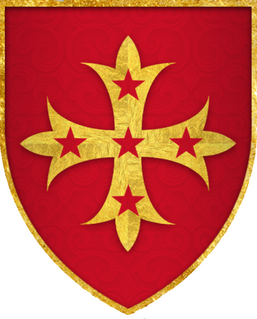 W
WSir Henry Ughtred or Oughtred was a merchant and shipbuilder during the reign of Elizabeth I. One of his ships, the Leicester sailed with Sir Francis Drake against the Spanish Armada. He was elected MP for the seat of Marlborough in 1584 and of Great Bedwyn in 1589. A wealthy landowner, Ughtred played an active role in the Plantations of Ireland and was knighted by the Lord Deputy in 1593. He was the son of Sir Anthony Ughtred and Elizabeth Seymour, sister to Jane, the third wife of Henry VIII. Sometime after 1557 he married Elizabeth, widow of Sir William Courtenay and daughter of John Paulet, 2nd Marquess of Winchester.
 W
WHenry Ussher was an Irish Protestant churchman, a founder of Trinity College, Dublin, and Church of Ireland Archbishop of Armagh.
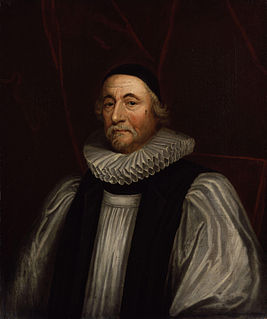 W
WJames Ussher was the Church of Ireland Archbishop of Armagh and Primate of All Ireland between 1625 and 1656. He was a prolific scholar and church leader, who today is most famous for his identification of the genuine letters of the church father, Ignatius of Antioch, and for his chronology that sought to establish the time and date of the creation as "the entrance of the night preceding the 23rd day of October... the year before Christ 4004"; that is, around 6 pm on 22 October 4004 BC, per the proleptic Julian calendar.